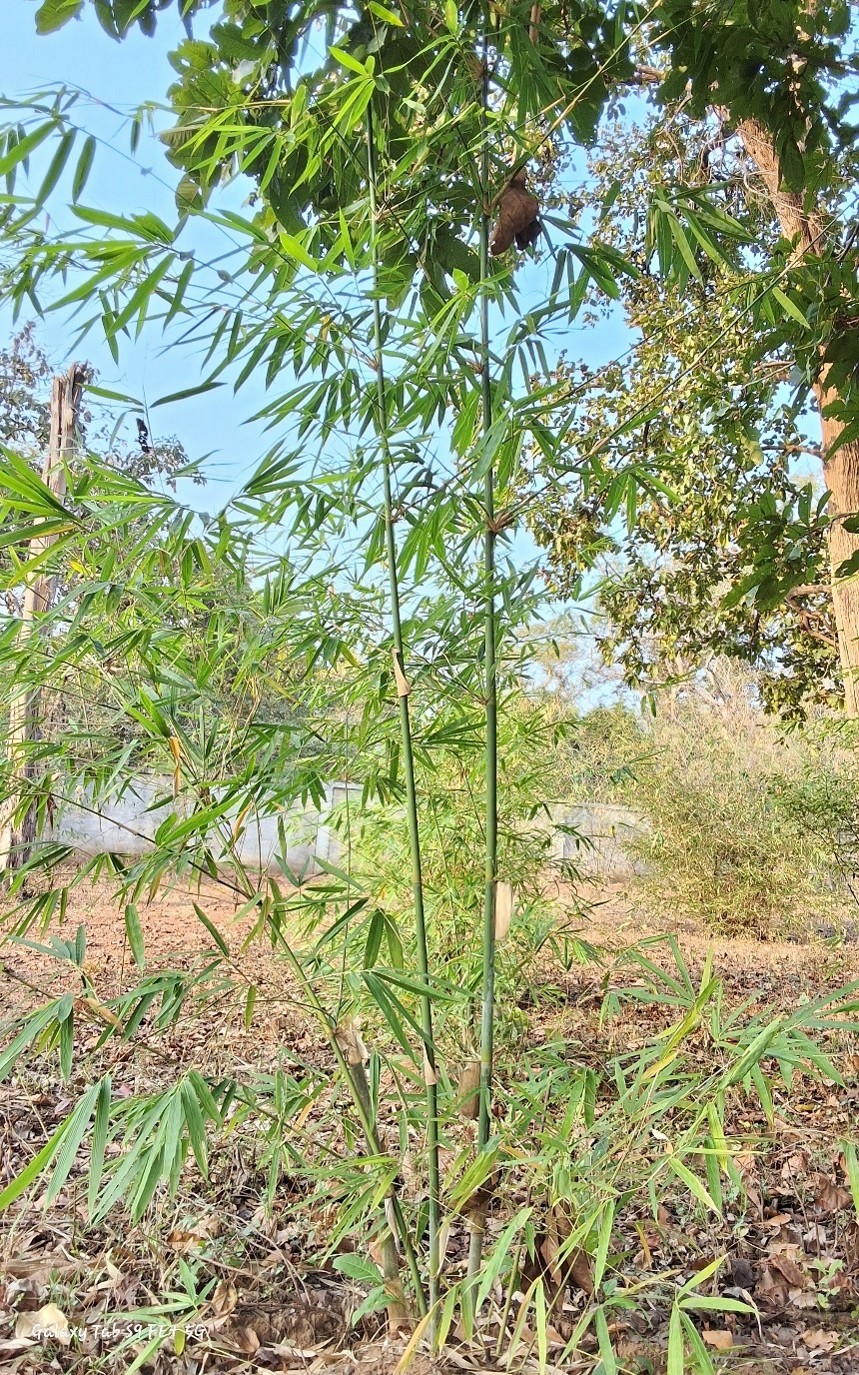Dendrocalamus mizorameana

Dendrocalamus mizorameana
Dendrocalamus mizoramina also known as Mizoram Bamboo, is a clumping bamboo species native to the Mizoram region in India. It is commonly found in tropical forests, riverine areas, and hilly terrains, typically at elevations ranging from 400 m to 1,500 m. The bamboo thrives in regions with an annual rainfall ranging from 1,000 mm to 3,000 mm, characteristic of the tropical and subtropical areas it grows in. This species prefers fertile, well-drained soils, particularly loamy or clay soils, although it can tolerate a variety of soil types.
This bamboo can grow to a height of 10 to 18 meters with a diameter of 8 to 12 cm. The culms are initially green, turning yellowish as they age. The internode length ranges from 30 to 50 cm, and the culm sheath is green when young, gradually turning light brown with age. The adaxial surface of the sheath is smooth and glabrous, while the abaxial surface is slightly hairy, with ciliate margins. The leaves of the plant are lanceolate to ovate in shape, measuring 20 to 35 cm in length and 3 to 5 cm in breadth. The plant produces a large panicle-type inflorescence with numerous small flowers, where the empty glumes are ovoid with prominent veins. The flowering glumes are larger than the empty glumes, glabrous, and ciliate on the edges. The stamens are exserted with glabrous anthers, and the pistil has a hairy style with a small, inconspicuous stigma.
Flowering is a rare event for Dendrocalamus mizorameana, typically occurring once every 25 to 35 years. Flowering has been recorded in Mizoram and parts of Nagaland, although it is not a frequent occurrence, and seed production is consequently rare. Propagation of this bamboo species is most commonly done through culm cuttings, but other methods include clump division, where mature clumps are separated into sections, and the use of offsets or shoots emerging from the base for propagation. In some cases, tissue culture is used for propagation in controlled environments.
This bamboo has a variety of uses. It is widely used in construction, particularly in rural areas, for making poles, scaffolding, and other structures. Due to its tall and straight culms, it is also highly valued for making furniture, handicrafts, and decorative items. The young shoots of Dendrocalamus mizorameana are edible and are commonly consumed in local cuisines in Northeast India. The bamboo's dense root system is also valuable in erosion control, particularly in hilly areas where it helps prevent soil erosion. Additionally, the bamboo is suitable for use in the pulp and paper industries.
Listen Audio:
Need assistance? BRTC Faculty